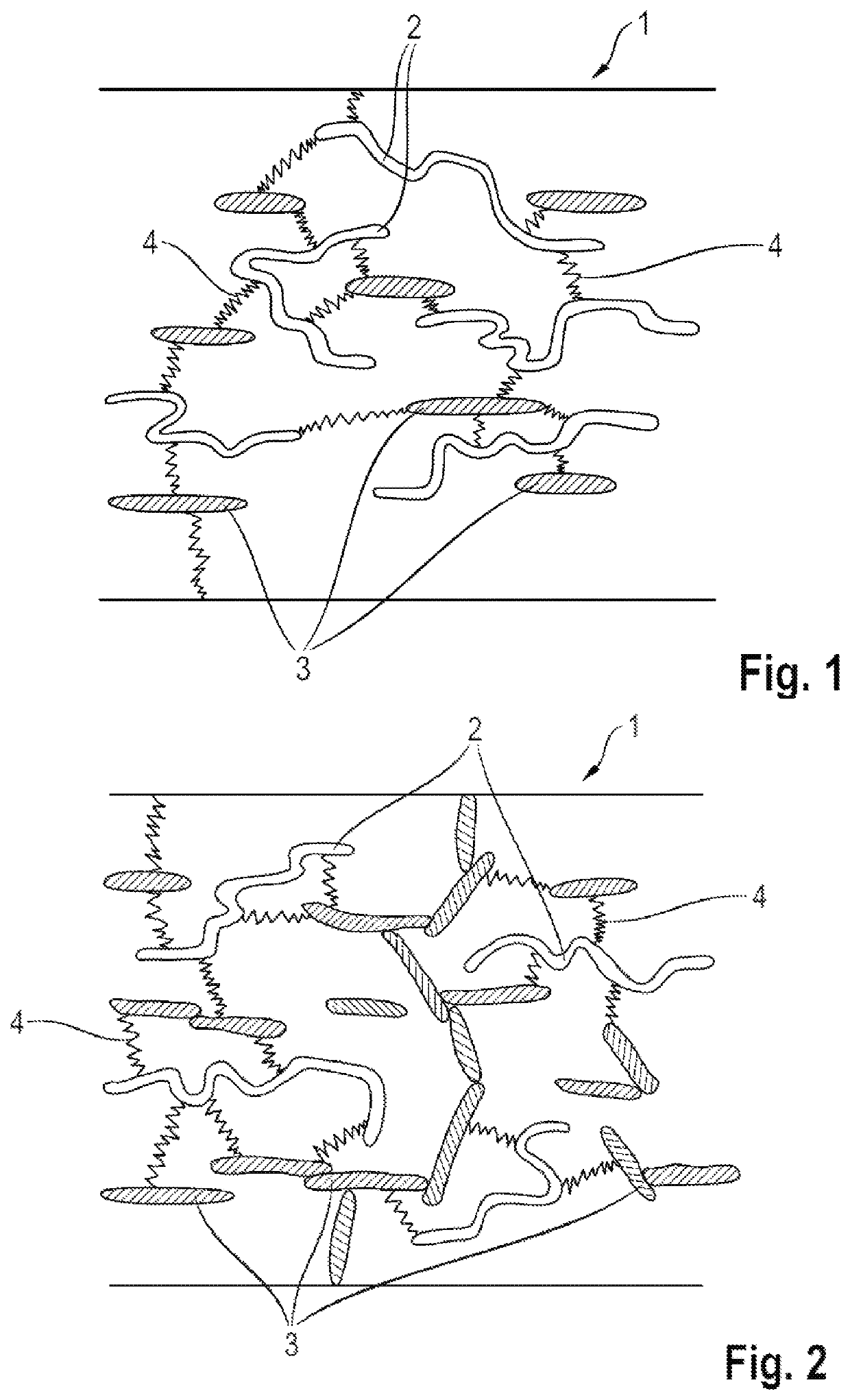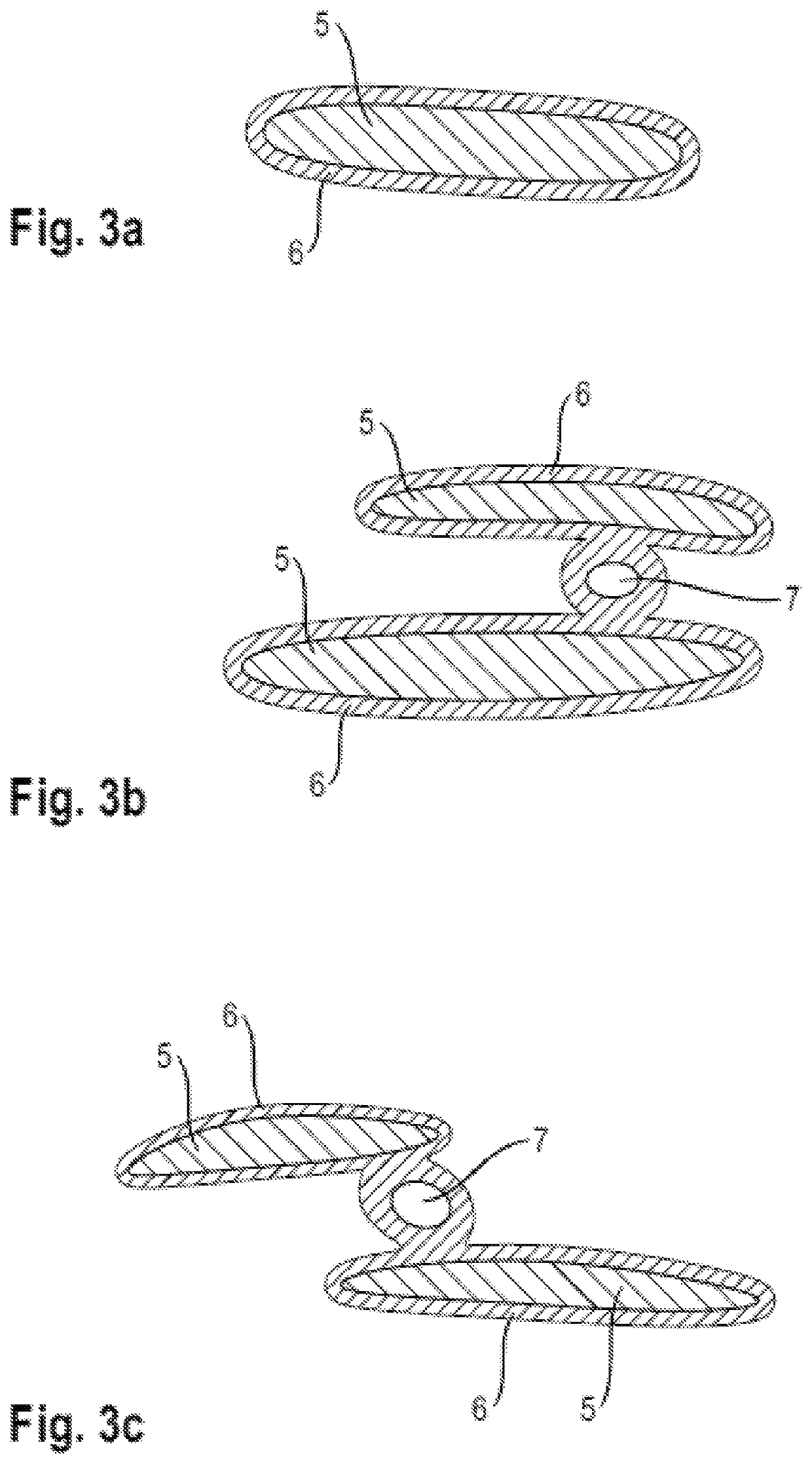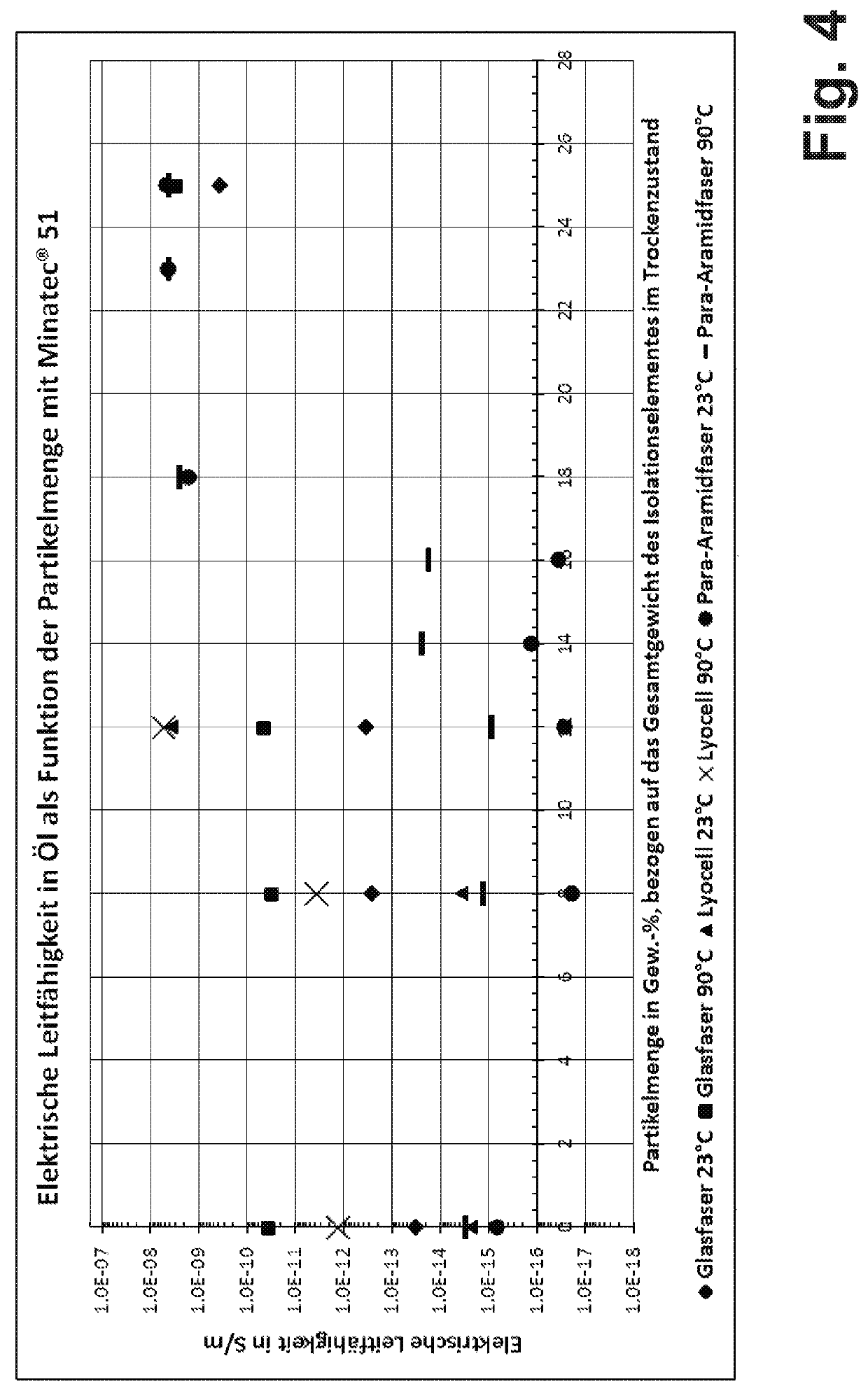Insulation element with artificial fibres for electrical insulation in the high voltage range
a technology of artificial fibres and insulation elements, which is applied in the direction of liquid organic insulators, transformers/inductance coils/windings/connections, inhomogenous insulation materials, etc., can solve the problem of high electrical conductivity of most customary insulation elements, strong temperature-dependent electrical conductivity of most electrical components, and a large amount of electrical insulation of transformers. the effect of high electrical conductivity and low cos
- Summary
- Abstract
- Description
- Claims
- Application Information
AI Technical Summary
Benefits of technology
Problems solved by technology
Method used
Image
Examples
Embodiment Construction
[0045]In the following, a process for producing a preferred embodiment of an inventive insulation element 1 for electrical insulation of an electrotechnical component in the high-voltage range is indicated. FIGS. 1 and 2 show schematic cross-sectional views of such insulation elements 1, each with a different dosage of electrically conductive particles 3.
[0046]For the production of the inventive insulation element of this embodiment, chemical fibers 2 are used. Chemical fibers used may, for example, be para-aramid fibers, for example Twaron® 1094 from Teijin (Kasinostrasse 19-21, 42103 Wuppertal, Germany). The chemical fibers 2 may be ground, such that they are in a ground form for the further processing. They have a dewatering resistance of 5 SR (Schopper-Riegler) to 80 SR. The average length-weighted fiber length of the starting material, i.e. of the chemical fibers 2, is preferably in a range between 0.3 mm and 6.0 mm, but more preferably in a range between 0.3 mm and 2.2 mm. Dew...
PUM
| Property | Measurement | Unit |
|---|---|---|
| size | aaaaa | aaaaa |
| particle size | aaaaa | aaaaa |
| particle size | aaaaa | aaaaa |
Abstract
Description
Claims
Application Information
 Login to View More
Login to View More - R&D
- Intellectual Property
- Life Sciences
- Materials
- Tech Scout
- Unparalleled Data Quality
- Higher Quality Content
- 60% Fewer Hallucinations
Browse by: Latest US Patents, China's latest patents, Technical Efficacy Thesaurus, Application Domain, Technology Topic, Popular Technical Reports.
© 2025 PatSnap. All rights reserved.Legal|Privacy policy|Modern Slavery Act Transparency Statement|Sitemap|About US| Contact US: help@patsnap.com



